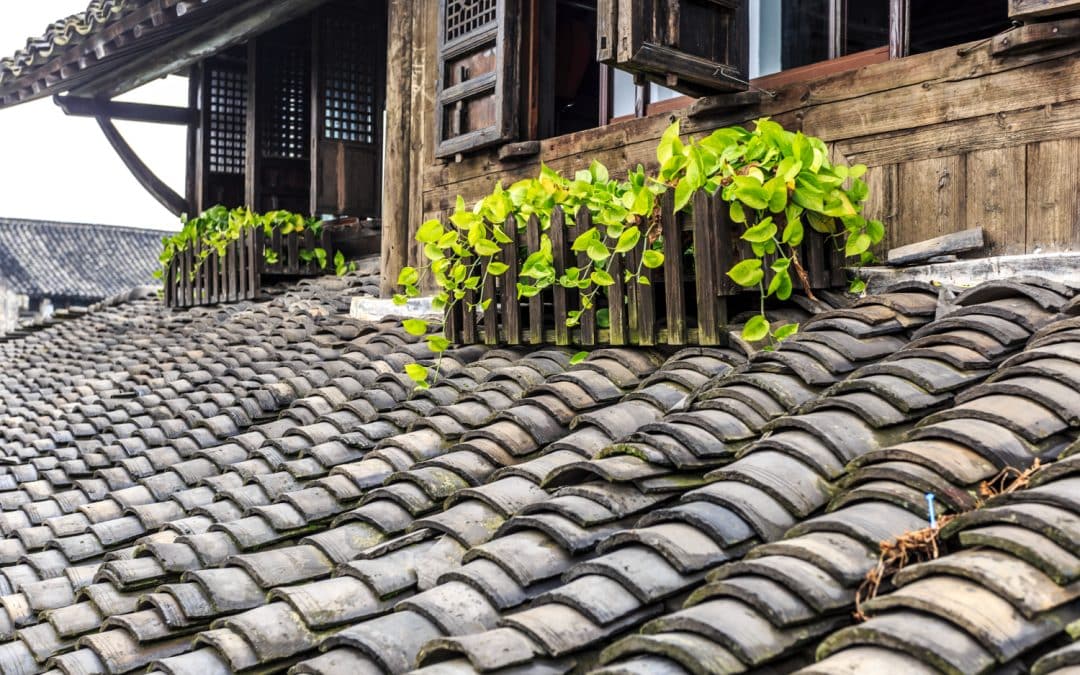Your roof plays a crucial role in your home’s energy efficiency. The design and materials you choose can significantly impact how much energy your home uses and how comfortable it feels inside. Understanding these factors can lead to better choices that save money and improve your living environment.
The shape of your roof, the materials it is made from, and how well it ventilates all contribute to its energy efficiency. A well-designed roof helps keep your home warm in the winter and cool in the summer. This not only reduces your energy bills but also makes your home more environmentally friendly.
Modern roofing technologies offer various options to enhance energy efficiency. From incorporating solar panels to using highly reflective materials, homeowners can make informed decisions to optimize their roof’s performance. Exploring these elements in depth will help you understand the impact of roof design on home energy efficiency and guide you in making the best choices for your home.
How Roof Shape Affects Energy Efficiency
The shape of your roof can greatly affect your home’s energy efficiency. Different roof shapes impact how heat is absorbed and lost. For instance, a steeply pitched roof can provide better drainage and snow shedding. This helps in colder climates by preventing ice dams, reducing strain on your heating system.
Flat roofs are common in warmer areas. They can be designed to reflect more sunlight, keeping homes cooler. By reducing heat absorption, flat roofs help you save on cooling costs. Additionally, flat roofs can accommodate solar panels easily, further improving energy efficiency.
Another shape to consider is the gable roof. Gable roofs allow for better air circulation in the attic. Good air circulation is vital for keeping your home comfortable and reducing the load on your HVAC system. Proper air circulation helps in maintaining a consistent indoor temperature, leading to lower energy bills.
In summary, roof shape plays a vital role in managing your home’s energy use. Choosing the right shape based on your climate can lead to significant energy savings and increased comfort.
The Role of Roofing Materials in Insulation
Roofing materials are crucial for insulation and energy efficiency. Different materials offer varying levels of thermal resistance or R-value. A higher R-value means better insulation.
Asphalt shingles are common and provide decent insulation. However, they absorb a lot of heat. In hot climates, this can increase cooling costs. Cool roofing materials, like reflective shingles, can help by reflecting more sunlight and reducing heat gain.
Metal roofs are another option. They have good insulation properties and reflect sunlight well. Metal roofs can be painted or coated with reflective finishes to improve their energy efficiency. The added bonus is their durability, making them a long-term investment.
Clay and concrete tiles are also excellent for insulation. They have a high thermal mass, meaning they can absorb and store heat. This helps regulate indoor temperatures, reducing the need for heating and cooling. In addition, these materials are resistant to fire and pests, adding an extra layer of protection for your home.
Considering the insulation qualities of roofing materials can make a big difference in your home’s energy use. Choosing the right material can help keep your home comfortable and your energy bills low.
Importance of Ventilation in Roof Design
Proper ventilation is essential for an energy-efficient roof. Without it, heat and moisture can build up in your attic, causing various problems. Good ventilation helps to remove hot air in the summer, reducing the cooling load on your HVAC system. In winter, it prevents moisture build-up, which can lead to mold and structural issues.
Ventilation systems usually involve a combination of intake and exhaust vents. Intake vents, often located at the roof’s edge, let in fresh air. Exhaust vents, located near the roof’s peak, allow hot, stale air to escape. This creates a continuous flow of air, keeping the attic space balanced and cool.
There are different types of roof vents. Ridge vents run along the roof’s peak and are effective for continuous airflow. Soffit vents, located under the eaves, allow fresh air in and work well with ridge vents. Box vents are also an option, usually placed evenly across the roof to expel hot air.
Making sure we have the right ventilation system can vastly improve our home’s energy efficiency. By choosing the best types of vents for our specific roof design, we ensure a balanced and energy-efficient home. Good ventilation extends the life of roofing materials and improves overall energy performance.
Features That Enhance Energy Efficiency in Modern Roofs
Modern roofs have many features designed to improve energy efficiency. One key feature is reflective roofing. These roofs are made with materials that reflect more sunlight and absorb less heat, keeping homes cooler.
Another feature is the installation of cool roofs. Cool roofs use advanced materials to increase their solar reflectance and thermal emittance. This helps in managing solar heat gain and reduces the need for air conditioning.
Green roofs are becoming more popular as well. They consist of a layer of vegetation planted over a waterproofing system. Green roofs provide excellent insulation, absorb rainwater, and reduce the heat island effect in urban areas. They also contribute to better air quality and add a natural aesthetic to homes.
Solar panels are another addition that boosts a roof’s energy efficiency. Installing solar panels helps generate clean electricity for the home, reducing dependency on external power sources. This not only lowers energy bills but also decreases the home’s carbon footprint.
Modern roof designs often incorporate advanced insulation materials like spray foam or rigid foam boards. These materials provide a higher R-value, improving the roof’s insulating properties. Better insulation means the home stays warmer in winter and cooler in summer, reducing energy use.
Using these modern features in roof design makes our homes more energy-efficient. By investing in these technologies, we contribute to a sustainable environment and enjoy lower energy costs.
Final Thoughts
The design and materials of your roof have a significant impact on your home’s energy efficiency. Understanding how different elements—like shape, materials, ventilation, and modern features—contribute to energy savings can help us make informed decisions. By carefully considering these aspects, we improve our homes’ comfort and reduce energy costs.
Taking proactive steps to make your roof more energy-efficient is not just a smart financial move but also an environmentally responsible choice. Better insulated and well-ventilated roofs lead to less energy consumption and greater savings on utility bills.
At Mike Huddleston Roofing Systems, we offer expert advice and services to help you achieve the best energy efficiency for your roof. Whether you need a new roof installation or an upgrade, our team is ready to assist. Contact us today to learn how we can make your home more energy-efficient and comfortable year-round.

